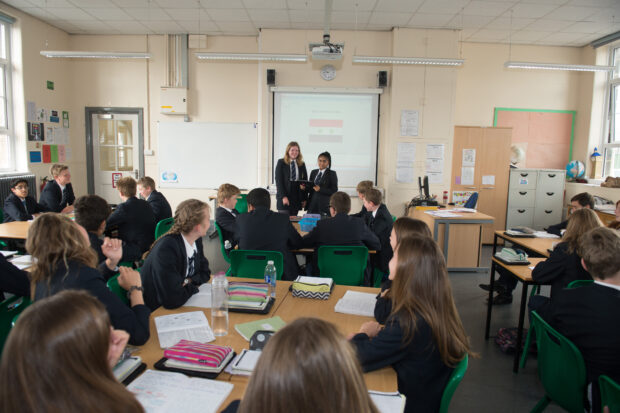Last year, at Prince Henry’s Grammar School in Otley, West Yorkshire, the findings of the Marking, Planning and Data Workload Review groups were presented to colleagues in a whole-staff meeting. Everyone from classroom teachers to SLT was asked to think about their workload and pose a simple question: do I really need to do this?
It was through responding to this question that the school collectively recognised what could be done to reduce workload.
There were some major changes, such as removing the need for teachers to write reports, as well as vital marginal gains, such as removing the need to create lesson plans for observations, allowing teachers to print their lesson PowerPoints instead.
Below are some of the changes we’ve made to help reduce unnecessary workload at the school.

Making Marking Matter
Our marking policy has been changed to ensure the focus is on quality rather than quantity, reducing the expectation of how much work should be assessed in detail each half term to one piece.
It also includes the expectation that lesson time is given to students to respond to their targets and really engage with the quality feedback they have received. In addition, homework has been reduced with the same principle in mind: less marking, more quality of task to aid their understanding.
Changes to the marking policy were taken directly from the recommendations of the Marking Workload Review group, that ‘all marking should be meaningful, manageable and motivating.’ SLT reviewed the policy as a result of these suggestions.
Planning Collaboratively
We reorganised our INSET days to create more time to plan collaboratively. The school has used Teaching and Learning Partnerships (TLPs) for several years with directed time given for cross-curricular groups of three teachers to work on facets of Teaching & Learning.
These are based loosely on the Japanese ‘Lesson Study’ model, in which groups of teachers collaboratively plan lessons, or parts of lessons, and then watch these being delivered before reconvening to unpick the lesson to see if it can be improved, before teaching it to another class.
Initially, the aim of these cross-curricular groups was to improve consistency of Teaching & Learning but, in response to the workload planning report calling for purposeful and focused collaboration, the TLPs were moved from cross-curricular to being within subject areas, with teachers being given time to collaborate in small subject-specific groups and produce useful resources.

Collaboration is now much more focused, as the prior issue of pedagogical subject knowledge hampering cross-curricular groups is no longer an obstacle: teachers can focus solely on creating resources for subjects they understand.
In English, this has meant groups of us focusing on the curriculum and certain questions in the new GCSE Specifications, and creating resources to share on common areas of the school’s file server, accessible to all faculties.
In some cases, such as the Literacy resources created by the English Department, these are now being accessed by subjects as diverse as PE, Technology and History. As other subjects have undergone specification reform, these opportunities to work together and reduce individual workload have become even more valuable.
Useful Data Only
Data collection has been streamlined so that we are only collecting what we have identified we need in order to support the pupils and develop our teaching. Some data collection points have been halved, such as the collection of data on a key GCSE cohort (called Assertive Mentoring).
We have also removed the requirement for non-statutory written reports and this has reduced the demands on teachers to gather data only for this purpose, relying only on what they gather for teaching purposes. Parents are now encouraged to engage more directly with their child’s exercise book to see progress and what their specific targets for improvement are.

Next Steps
With the profession now aware of the average working weeks – 54 hours for classroom and middle leaders, 60 hours for senior leadership (according to the Teacher Workload Survey 2016) – there is a real sense of this issue being taken seriously and conversations are taking place about wellbeing. For us this has meant workload review and awareness being built into Faculty Improvement Plans. Staff at PHGS feel that;
The changes that have been made at PHGS to support staff with reducing the workload have been instrumental in maintaining the high standards that we want to provide for our students. - Modern Foreign Language Teacher, PHGS
You can also find more reducing teacher workload articles, written by teachers, on the DfE’s ‘Reducing Teacher Workload’ hub at www.tes.com/dfe-teacher-workload.